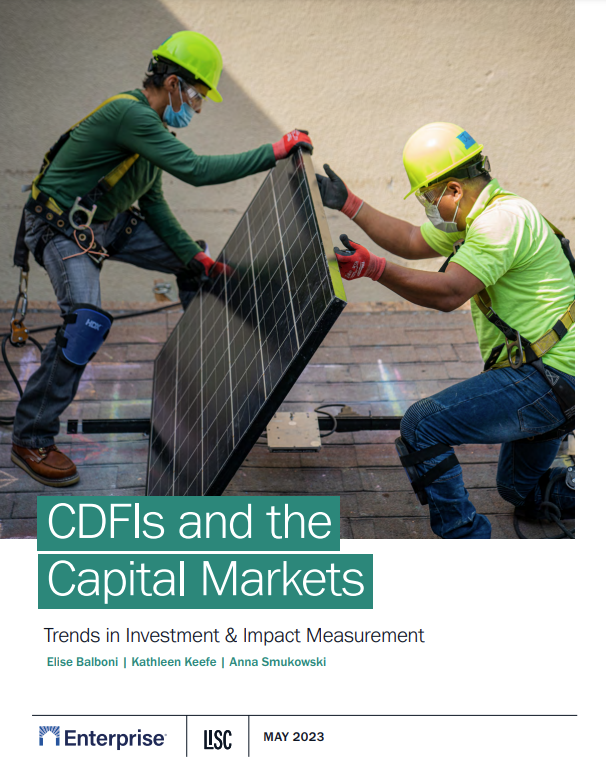CDFIs and the Capital Markets
A new paper from LISC and Enterprise Community Partners examines the expanding landscape for CDFIs in the capital markets. It offers investors and CDFI practitioners an unprecedented and indispensable set of tools and strategies for boosting capital flows to CDFIs, with the ultimate goal of helping create a more equitable and sustainable economy.
Executive Summary
LISC has published a series of white papers on community development financial institutions (“CDFIs”) as vehicles for impact investment, beginning with CDFIs & Impact Investing: An Industry Review in December 2017 (“2017 White Paper”). In June 2020, LISC built on its original research and published CDFIs & the Capital Markets: Tapping into Impact Investors (“2020 White Paper”), which sought to detail the industry’s evolving approach to the capital markets through positioning within accepted impact frameworks. In this latest installment, LISC is joined by Enterprise Community Partners, Inc. (“Enterprise”) in providing an update through year-end 2022 of rated and unrated CDFI issuance, as well as emerging trends in investment, impact measurement and management.
The year 2021 saw tremendous growth in the sustainable debt markets with $1 trillion in total issuance, due in part to the historically low interest rate environment, ongoing impacts of Covid-19 and increased focus on racial equity in the U.S. market. Moody’s Investor Services initially projected issuance of labeled Green, Social, Sustainability and Sustainability-Linked bonds to reach $1.35 trillion in 2022. However, issuance fell short of predictions, with high inflation and market volatility leading to aggressive interest rate hikes and reduced issuer demand for new debt. Further troubling the sustainable finance markets during the year was a wider backlash against environmental, social and governance (“ESG”) investing, with allegations ranging from breach of fiduciary duty to a secret agenda to impose leftist social values on businesses and the capital markets.
Despite these 2022 trends, observes Jon Hale, director of sustainability research for the Americas at Morningstar Sustainalytics, “[S]ustainable investing and the consideration of ESG factors have become part of the investment mainstream over the past few years. The rapid growth has been spurred by the need for investors to consider nonfinancial risks posed by problems ranging from climate change to natural resource depletion, treatment of workers throughout the supply chain, corporate ethics, and wealth inequality.”
The CDFI sector has grown and matured since 2017 when LISC went to market with the sector’s inaugural $100 million Sustainability Bond. CDFIs now have the opportunity to position the industry as the ultimate impact investment, capable of addressing key social and environmental issues like the acute affordable housing crisis; persistent racial health, wealth and opportunity gaps; and environmental sustainability measures in low-income and historically underserved communities.
